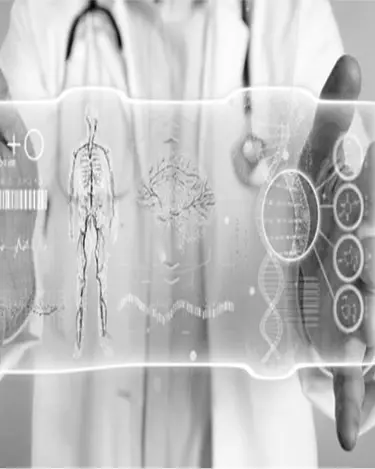Treatment depends on the severity and type of vascular disease. We at Adam’s Vital Hospital offer a variety of treatments with the latest endovascular procedure and traditional surgical interventions
Lifestyle Modification
Lifestyle modification is the first step towards the treatment of vascular diseases. This may include, switching to a low cholesterol diet, regular exercise, quit smoking, and controlling sugar levels.
Medication
Vascular surgeons prescribe medications to some patients to manage their cholesterol levels and platelet counts and functions.
Many other minimally invasive endovascular options can be performed as an alternative to conventional open surgeries.
-
Thoracic Endovascular Aortic Repair :
This is a minimally invasive endovascular procedure that involves small or no incisions in the groin, followed by the placement of a stent-graft. It is an optimal option for Thoracic Aortic Aneurysm and Aortic Dissection.
-
Endovascular Aneurysm Repair :
This is a minimally invasive procedure for treating an abdominal aortic aneurysm. Placement of stent-graft in the groin continues the blood flow in the aorta without putting pressure on the aneurysm, preventing possible rupture.
-
Fenestrated Endovascular Aneurysm Repair :
This is a minimally invasive procedure used to treat the complex abdominal aortic aneurysm.
-
Angioplasty and Stenting :
This procedure is performed for treating Cerebrovascular disease, Vertebrobasilar Disease, and Peripheral Arterial Disease. It involves a catheter-guiding balloon which helps in opening a narrowed artery.
-
Cryoplasty :
It is generally used to treat Peripheral Arterial disease in which the vascular surgeon inserts the balloon catheter into the blocked artery and repairs any obstruction in the vessel by utilizing liquid nitrogen gas.
-
Laser Atherectomy :
This procedure involves the removal of atherosclerotic plaque from the blood vessel. The specialized catheter contains a sharp rotating blade, grinding bit, or laser filament that permits the surgeon to remove plaque from the vessel wall and suction any remaining debris.
There are two main methods of hemodialysis access
- AV graft : In this method, a prosthetic graft is sewn between an artery and vein in the arm or leg
- AV fistula : In this method, a piece of vein is taken from the arm or leg and sewn in the nearby artery. The sewn- vein eventually enlarges and becomes stronger and thicker
Surgical Options
our vascular surgeons perform a wide range of procedures intending to achieve the best outcomes.
Open Abdominal Aortic Surgery
This surgery is performed to treat Abdominal Aortic Aneurysm and Aortoiliac Occlusive disease, involving abdominal incision to gain access to the abdominal aorta. In patients with blocked aorta or iliac vessels, a graft is sewn in to redirect blood around the areas of blockage.
Bypass Surgery
This procedure creates an alternate channel for blood flow. The graft can be taken from the person’s vein or a synthetic material can be used. Bypass treatment is used for treating Vertebrobasilar Disease, Peripheral Arterial Disease, Renal Vascular Disease, and Mesenteric Vascular Disease.
Open Carotid and Femoral Endarterectomy
This procedure is used for treating Cerebrovascular Disease, Peripheral Arterial Disease, and Vertebrobasilar Disease. It involves the surgical removal of plaque from the inner lining of an artery.
Thoracic Outlet Surgery
This open surgical procedure is performed for treating Thoracic Outlet Syndrome.
Recovery Time and Post- Treatment Procedure
The recovery time for vascular surgery depends on the disease and how the procedure was performed.
After vascular surgery, most people need some time to deal with pain and immobility, it also involves employing some new lifestyle modifications as well as adjusting emotionally to all the new changes.
At Adam Vital Hospital, we have the best team of vascular surgeons who will help you understand the injury and choices of treatment. We are among the best hospitals in Dubai Providing all kinds of treatments including vascular surgery.



